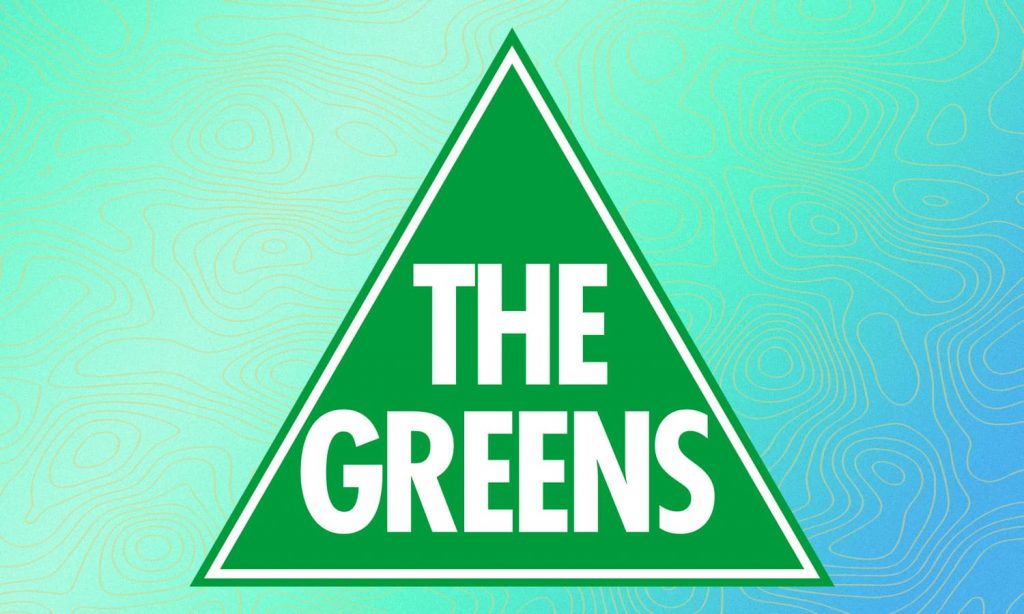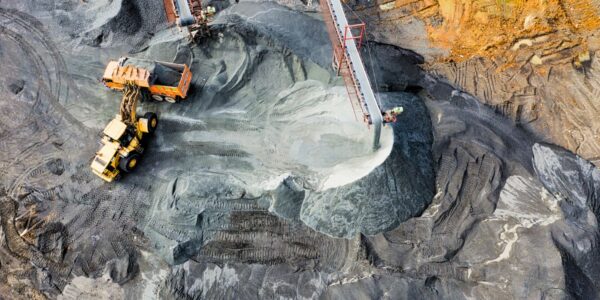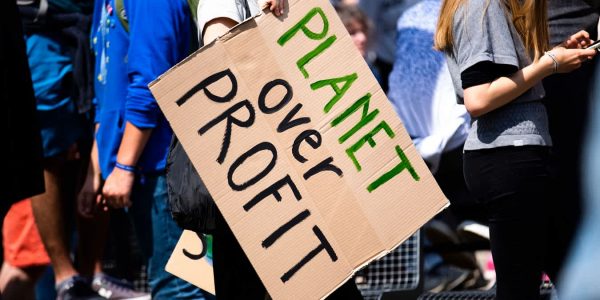The longtime butt of political jokes, the Greens are emerging as a serious political force at the coming election.
Officially The Australian Greens, they are the third largest political party behind the Liberal Party and Labor and have been steadily increasing their vote share over the past few decades.
If the latest polls are correct, the Greens have seen a jump in popularity and voting intention, bringing them up two points to 10%. This is in comparison to Labor’s 38% and the Coalition’s 36%. Smaller parties like One Nation and the United Australia Party sit at 3% each.
It’s therefore sensible to not write off the growing political party that has emerged from the environmental movement, offering revolutionary policies rooted in social justice and climate action.
With the electoral policy announcement’s coming thick and fast, we dive into what’s on offer if you vote Green, their chances of winning, and what voting for them really means. Here’s what you need to know.
Who Are the Greens?
The Greens emerged as a federal party in 1992 from a coalition of relatively successful state parties like the United Tasmania Group and the Greens Western Australia. Initially, these groups were formed in reaction to growing threats of nuclear war as well as the broader environmentalist movement that gained popularity in the late 60s and early 70s, with books like Rachel Carson’s Silent Spring a driving ideological force.
They were anti-war, pro-recycling, and fought to protect animal welfare. The Federal Greens rose to prominence in opposition to John Howard’s support and submission to the wars in Iraq and Afghanistan in the early 2000s and saw big gains in 2007 with policies that supported emissions reductions and financial reform during the Global Financial Crash.
Today, the Greens are led by Adam Bandt and have a membership of around 15,000. There is one Green federal MP, Bandt, nine Green senators, 23 Green state MPs and over 100 Green councillors and Green mayors. The Greens hold crossbench positions in all states and territories except the NT and are in a coalition government with Labor in the ACT.
What Are the Greens’ Main Policies?
Despite the name, the Greens are not simply focused on the environment. Since inception, they’ve championed politics in harmony with the natural laws of the planet and its peoples.
Their four main pillars are ‘social justice’, ‘sustainability’, ‘grassroots democracy’, and ‘peace and non-violence.’
Entering the 2022 Federal Election, the Greens are pushing policies that would tax the wealthiest individuals and corporations in society in an effort to redistribute funds that could be spend protecting the environment and the population.
Climate and the Environment
Obviously, climate change and protecting the environment is a big focus for the Greens. To this end, they support the banning of new fossil fuel extraction infrastructures, helping fossil fuel sector employees transition to jobs in the renewable sector, cutting the $10 billion spent on fossil fuel subsidies, banning the donations of the fossil fuel sector to political parties, and a huge investment in renewable energy, including supporting households switch to solar energy.
The Greens want to reach net zero or net negative emissions by 2035 and plan to make big emmitors pay to capture carbon from the atmosphere to get there.
In terms of the environment, they seek to address the “extinction crisis” in Australia by funding wildlife restoration and the planting of two billion trees. They also want to end native forest logging, establish stronger legal protections around the Great Barrier Reef, strengthen environmental protection laws, and create an independent watchdog to police pollution and water security risks.
The Economy
The economy is one issue you wouldn’t expect the Greens to have solid plans on, but they stem largely from their social justice and environmental philosophy.
‘Taxing the billionaires‘ is where a lot of their proposed revenue to fund their other changes is being sought. They would put a 40% tax on businesses making over $100 million each year, put a 6% tax on Australia’s 112 billionaires, and crackdown on multi-national tax avoidance. Combined, they say that policies will net some $382 billion over 10 years.
In positive terms, the Greens want to rebuild the domestic manufacturing industry and ensure buying local is the default, transition the whole economy to a renewables and circular based one, and build a million new affordable homes.
Their labour policies are also strong, with promises to increase the minimum wage to 60% of the median wage, close the gender pay gap, strengthen labour laws to increase job security, and fund the creative industries.
They also plan to make make university and TAFE completely free and wipe existing HECS debt.
The Greens also seek to restore public sector jobs and lift public sector wages in line with the private sector, make energy companies publicly owned, and invest in infrastructure through grants programmes independently assessed to tackle corruption.
A key pledge that has raised a few eyebrows is the one to pay maternity leave at a pro-rata rate of $100,000 per year, for 26 weeks. They would also pay superannuation on this, something that has been cited as one way to close the gender super gap.
Healthcare and Wellbeing
The Greens have said they want to restore the public health system in Australia, with big spending on Medicare.
To do so, they would legislate equal funding between hospitals, reinvest the $7 billion spent on private health insurance rebates back into the public system, and ensure that mental health support is fully funded under Medicare. They also want to put dental care back on Medicare too.
Their drug policies seek to treat drug use as a health issue, not a criminal one, and they would legalise, regulate, and tax the sale of cannabis as well as fund pill testing at festivals.
They plan to invest $371 million into community-led First Nations health services and invest in growing the number of First Nations people working in the healthcare sector.
In terms of women’s health, they want to increase access to safe, legal, and affordable abortion across the country, provide free sanitary products in all schools, and increase protections for those who need to take leave for period, endometriosis, or other fertility related pain.
Social Justice
Social justice is a big part of the Greens electoral policies. They have big, bold ambitions like “ending” sexism and systemic racism.
Focusing on Indigenous rights, the Greens have said that they will adopt the Uluru Statement from the Heart, establish a Truth and Justice Commission to redress historical wrongs, and give surviving members of the Stolen Generation $200,000 compensation. They would also protect Indigenous sacred sites and expand the First Nations rangers programme.
The Greens would also seek to remove exemptions for religious schools from anti-discrimination laws, scrap the $61 million spent on school chaplains, and invest in anti-bullying initiatives and teacher training.
They would also spend $12 billion to support the National Plan to End Violence Against Women and Children and a standalone National Plan for First Nations Women’s Safety. They would double the funding for women’s legal services and Family Violence Prevention Legal Services, spend $477 million to support the national rollout of Our Watch’s Respectful Relationships education in all public schools, give $10,000 Survivor Grants for women escaping abuse, as well as enshrine 10 days paid domestic violence leave.
The Greens also support the closure of the Manus Island and Nauru detention camps, increase refugee intake, and establish seven day onshore processing limits for asylum seekers.
They also support fully resourcing the National Disability Insurance Scheme, create a $3 billion accessible infrastructure fund, and raise the age of criminal responsibility to 14.
What Happens if You Vote Green?
The Greens are unlikely to ever win an election, although stranger things have happened. For the most part, the party seeks to be a driving influence in politics at all levels of government, effecting change where they can.
Their primary focus of this election is getting the Coalition out of government, but their dream position would be to get enough seats so as to hold the balance of power in Parliament. Although Labor leader Anthony Albanese has repeatedly ruled out forming a coalition government with the Greens, the Greens could support them in a non-coalition role by offering their conditional support if Labor was to govern from a minority position.
It’s not as far-fetched as it seems. Labor, although they are polling well, would need a huge result at the election to form a majority government and it’s not at all clear that this is going to happen.
If it doesn’t, the Greens could be key to their administration. The party is targeting 12 senate seats that they believe they can win, along with around 10 lower house seats. As only three Greens senators are up for re-election this time around, that could give them serious power in government.
Australia’s preferential voting system benefits small parties, and perhaps none more so than the Greens. If you vote Green, your vote is not wasted if they don’t win. Simply rank your preferences after them, and whichever party wins will collect your vote. It’s a means by which people can take a punt on a party they know won’t win, but will demonstrate support for them and could even end up getting them elected.
Want to know more about what the major political parties stand for? Read our guide to The Labor Party here and our guide to The Liberal Party here.
Read more stories from The Latch and subscribe to our email newsletter.







